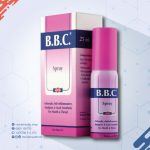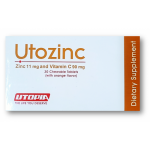Dermovate’
Clobetasol propionate
Presentation :
Dermovate cream and ointment each contain Cobdasol propionate .05 % w/w Both are white In appearance
‘Indications :
– Psoriasis (excluding widespread plaque psoriasis).
– Recalcitrant eczemas,
– lichen planus.
– Discoid lupus erythematosus and other skin conditions which do not respond satisfactorily to less active steroids. .
Dosage and Administration :
Apply sparingly to the affected area once or twict daily. Therapy should be discontinued when control is achieved, Treatment should not be continued formore than four weeks without the patient’s condition being reviewed. Repeated short courses of DERMOVATE may be: used to control exacerbations, If continuous steroid treatment is necessary. a less potent preparation should be used. In very resistant lesions, especially where there is hyperkeratosis, the anti-inflammatory effect of DERMOVATE can be enhanced, if necessary, by occluding the treatment area with polythene film. Overnight occlusion only is usually adequate to bring about a satisfactory response. Thereafter
improvement can usually be maintained by application without occlusion.
Contraindications :
– Hypersensitivity te the preparation.
– Rosacta.
– Acne vulgaris.
– Perioral dermatitis.
– Perianal and genital pruritus.
– Primary cutaneous viral infections (e.g., herpes simplex. Chickenpox).
The use of DERMOVATf skin preparations is not indicated in the treatment of primary infected skin lesions caused by infection with fungi or bacteria; dermatoses in children under one year of age, including dermatitis and napkin eruptions.
Warnings and Precautions :
Topical steroids may be hazardous in psoriasis for a number of reasons including rebound relapses, develo ment of tolerance ris~Wtf Oriasiuwldell.dop!llfJll.oUocal.D~sysle!nic- toxicity due to impaired barrier function of the skin. If used in psoriasis careful patient supervision is
important. Appropriate antimicrobial therapy should be used whenever treating inflammatory lesions which have become infected. Any spread of infection requires withdrawal of topical corticosteroid therapy and
systemic administration of antimicrobial agents. Bacterial infection is encouraged by the warm, moist conditions induced by occlusive dressings. and
the skin should be cleansed before a fresh dressing is applied.
long-term continuous therapy should be avoided where possible, particularly in infants and children, as adrenal suppression can occur even without occlusion. If DERMOVATE is required for use in children, it is recommended that the treatment should be reviewed weekly. It should be noted that the infant’s napkin may act as an occlusive dressing. The fact, more than other areas of the body, may exhibit atrophic changes after prolonged treatment
with potent topical corticosteroids. This must be borne in mind when treating such conditions as psoriasis, discoid lupus erythematosus and severe eczema.
If applied to the eyelids, care is needed to ensure that the preparation does not enter the eye. as glaucoma might result,
Interactions :
None reported.
Pregnancy and lactation :
Topical administration of corticosteroids to pregnant animals can cause abnormalities of foetal development. The relevance of this finding to human beings has not been established; however, topical steroids should not be used extensivelv in pregnancy, i.e. in large amounts or for prolonged periods.
The safe use of DERMOVATE during lactation has not been established.
Effects on Ability. to Drive and Use Machines :
DERMOVATE is not expected to have any effect
Adverse Reactions :
Adverse events are listed below by system organ class and frequency. Frequencies are defined as: very common (~1/1O), common (~1/100 and <1/10), uncommon (~l/HlOO and <1/1(0), rare (~1/10,()()() and
<1/1000) and very rare «1/10,000) including isolated reports. Very common,common and uncommon events were generally determined from clinical trial data. The background rates in placebo and comparator groups were not taken into account when assigning frequency categories to adverse events derived from clinical trial data, since: these rates were generally comparable to those in the active treatment group. Rare and very rare events were: generally determined from spontaneous data.
Immune system disorders :
Very rare: Hypersensitivity
local hyp(rsensitivity ~eactions such as erythema, rash, pruritus, urticaria, local skin burning and allergic contact dermatitis may occur at the site of application and may resemble symptoms of the condition under treatment.
If signs of hypersensitivity appear, application should be stopped immediately.
Endocrine disorders :
Very rare: Futures of HYiXrcortisolism
As with other topical cortirosteroids. prolongc:d use of large amounts. or treatment of extensive areas can result in sufficient systemic absorption to product: the features of hypercortisolism. This effect is mort likely to occur in infants and children, and if occlusive dressings are used. In infants. the napkin
may act as an occlusive dressing. Provided the weekly dosage is ItSS than 50 9 in adults. any suppression of the HPA axis is likely to be transient with a rapid return to normal values once the short course of steroid therapy has ceased.
Vascular disorders :
Uncommon,: Dilatation of the superficial blood vessels
Prolonged and intensive treatment with highly-active corticosteroid preparations may cause dilatation of the superficial blood vessels, particularly when occlusive dressings are used, or when skin folds are involved.
Skin and subcutaneous tissue disorders :
Uncommon: local atrophy, striae
Very rare: Thinning, pigmentation changes. hypertrichosis, exacerbation of underlying symptoms, pustular psoriasis. . Prolonged and intensive treatment with highly~active corticosteroid preparations may cause local atrophic changes, such as thinning and striae (see also Vascular Disorders MedDRA System Organ Class subheading), particularly when occlusive dressings are used, or when skin folds are involved. In very rare instances, treatment of psoriasis with corticosteroids (or its withdrawal) is thought to have provoked the pustular form of the disease.
Overdose :
Acute overdosage is very unlikely to occur, however, in the case of chronic overdosage or misuse the features offi’Vi)ercortlSOlism may appear
In this situation topical steroids should be reduced or discontinued gradually under medical supervision because of the risk of adrenal insufficiency.
PHARMACOLOGICAL PROPERTIES :
Pharmacodynamics
The major effect of clobetasol propionate on skin is a non-specific anti-inflammatory response, as a result of vasoconstriction and decrease in collagen synthesis.
Pharmacokinetics
Absorption
Percutaneous penetration of clobetasol propionate varies among individuals and can be increased by the use of occlusive dressings, or when the skin is inflamed or diseased.
Distribution :
Mean peak plasma clobetasol propionate concentrations of 0.63 nanogramsfml occurred in one study eight hours after the second application (13 h after an initial application) of 30 g ctobeteso! propionate 0.05 <\b ointment to normal individuals with healthy skin. Following the application of a second dose of 30 g clobetasol propionate cream 0.05 ~ mean peak plasma concentrations were
Slightly higher than the ointment and occurred 10 h after application. In a separate study, mean peak plasma concentrations of approximately 2.3 nanagrams/ml and 4.6 nanograms/ml occurred respectively in patients with psoriasis and eczema three hours after a single application of 25 g clobetasol propionate 0.05 ~ ointment.
Metabolism :
Following percutaneous absorption of clobetasol propionate the drug probably follows the metabolic pathway of systemically administered corticosteroids. However, systemic metabolism of clobetasol has never been fully characterised or quantified.
Incompatibilities :
None reported.
Niture and Contents of Container :
DERMOVATE Cream and Ointment are packed in collapsible aluminium tubes, either internally coated with epoxy-resin lacquer or. uncoated, with a polvpropvlene cap.
Instructions for Use/Handling :
Do not dilute DERMOVATE Cream.
Patients should be advised to wash their hands after applying DERMOVATE, unless it is the hands that
are..bcing-trfat
Not all presentations are available in every country.
DERMOVATE is a trademark of the GlaxoSmithKline group of companies
I KEEP ALL MEDICAMENTS OUT OF THE REACH OF CHILDREN
Manufactured by:
GlaxoSmithKline SAE, El Salam City, Cairo, AR.E.
Under license from the GlaxoSmithKline group of companies

